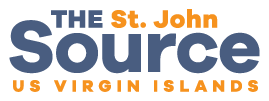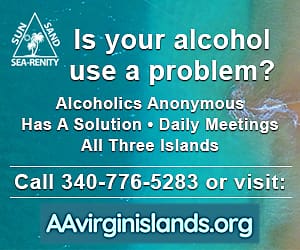
The Department of Planning and Natural Resources has reached a significant milestone in its efforts to shape the future of the U.S. Virgin Islands with the release last month of the final draft of the Comprehensive Land and Water Use Plan (CLWUP).
DPNR Commissioner Jean-Pierre L. Oriol announced that the formatted draft, which spans 198 pages and integrates extensive feedback from the community, is available for public review and comment at www.PlanUSVI.com until Dec 5, 2024. The Land and Water Use Plan is meant to demonstrate a collective community vision that aims to guide sustainable development and land use in the territory.
A Collaborative Journey Spanning Years
The journey to this comprehensive draft has been marked by significant community involvement and internal efforts within DPNR. In an interview with The Source, Oriol explained that the project officially began in October 2023 when the Horsley Witten Group was brought on board to facilitate the planning process. Initial meetings set the groundwork for coordination with other government agencies, ensuring a collaborative approach. From October to February, background documents and data were gathered, including research spanning years of efforts toward establishing a comprehensive plan.
Oriol highlighted that this groundwork paved the way for extensive community engagement. “We have done several rounds of town halls, with 15 meetings across the islands and over 1,400 participants contributing their voices,” he said. Additionally, 91 resident volunteers joined working groups to provide input on various aspects of the plan. By the end of the summer, a comprehensive online survey had gathered more feedback, reflecting the robust planning process.
Key Themes and Community Input
Public feedback throughout the development of the CLWUP has been broad but consistently pointed to critical issues such as enforcement and regulatory practices. “A lot of the complications or the things that are frustrating usually boil back to lack of enforcement,” Oriol noted. This sentiment was echoed in town hall discussions, where residents expressed concerns about the effectiveness of existing policies. DPNR captured these comments, acknowledging that while the current plan serves as a visioning document, future policy work will need to address enforcement and regulation more concretely.
The plan itself is a strategic framework that lays out goals and visions for sustainable land and water use without diving into highly specific legislative changes. Oriol explained the rationale behind this approach, stating, “If you get too specific, you move away from focusing on an overall framework and start dealing with individual and specific needs, which can lead to competing interests. We need agreement on the overall vision before drilling down into policy specifics.”
A Vision Backed by Existing Plans
While the CLWUP is a new document, it builds upon existing plans and data collected over years. “We’re not starting from scratch,” Oriol emphasized. He highlighted that plans already adopted by various agencies are contributing to this comprehensive vision. Examples include economic strategies from the Economic Development Authority, watershed management plans, and initiatives funded by the legislature, such as agricultural development projects.
Importantly, the CLWUP aligns with other major infrastructure and planning efforts in the territory. Oriol pointed out that while billions of dollars from federal and local funding sources, including FEMA and the Bipartisan Infrastructure Law, have been earmarked for development, many of these funds are still awaiting final design approvals. “It’s crucial to set this vision so that we know where we’re going to properly implement these funds,” Oriol said. The plan incorporates approaches for managing stormwater, enhancing solid waste infrastructure, and improving roadways, all of which are critical to long-term resilience and sustainability.
Challenges and Future Implementation
Despite the comprehensive nature of the plan, challenges remain. The practical execution of the vision outlined in the CLWUP will require significant capacity building within government agencies. During recent budget hearings, department heads, including those from DPNR, expressed concerns about staffing and funding shortfalls. The plan’s implementation matrix, a key feature Oriol praised, highlights the need to bolster capacity through strategic partnerships and funding mechanisms. “We have support from federal and local resources, but they haven’t significantly increased over the years,” Oriol admitted, noting that current federal funding opportunities could help bridge this gap.
Oriol stressed that while funding and resources are essential, the most immediate focus should be on adopting the plan and ensuring that the community’s vision is represented. “We want to make sure that the final product reflects what we want as a people before pushing it forward to the legislature for adoption,” he said. This adoption process, expected before the end of the 35th Legislature’s term, would set the stage for more targeted policy and regulatory measures.
An Invitation for Public Engagement
Public engagement remains a top priority. Oriol encouraged residents to review the final draft available on www.PlanUSVI.com, emphasizing that the document is comprehensive yet accessible. “It’s 198 pages, but it’s not overwhelming,” he assured, adding that the plan is broken down by goal areas and includes specific recommendations for each island and even individual towns like Cruz Bay, Coral Bay, Frederiksted, and Christiansted.
Residents are urged to submit their feedback through the online form on the project website before Dec. 5, 2024. This is the community’s final opportunity to weigh in before the plan moves to the Senate for approval. Public hearings will also be scheduled to ensure that any final discussions can take place openly, officials said.
“We have a chance to set a vision that can transform the territory,” Oriol concluded. “It’s a moment for everyone to come together and make their voices heard.”
For more details, to join the email list, and to review the plan, visit www.PlanUSVI.com. Summaries and videos from previous town hall sessions are also available on the website and on Facebook at www.facebook.com/planusvi.














